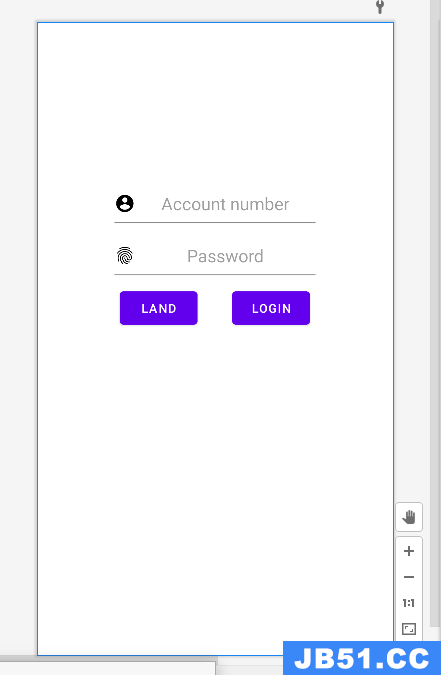示例代码一:
#include
#include"sqlite3.h"
usingnamespacestd;
intmain()
{
sqlite3*db=NULL;//定义sqlite的连接
constchar*zErrMsg= 0;//错误信息
intrc;
rc= sqlite3_open("E:/Programcode/sqlite code/testsqlite.db",&db);
if(rc!= sqlITE_OK)//如果打开数据库失败
{
zErrMsg= sqlite3_errmsg(db);//获取错误信息
cout<<zErrMsg<<endl;
sqlite3_close(db);//关闭数据库连接
return-1;
}
cout<<"opentestsqlite.db successfully!"<<endl;
sqlite3_close(db);
return0;
}
示例代码二:
头文件:my_db.h、sqlite3.h
源文件:sqlitedb.cpp、main.cpp
My_db.h代码:
#ifndefMY_DB_H
#defineMY_DB_H
intopen_db();
intcreate_table();
intdrop_table();
intinsert_data(intid,char*name,intage);
intsearch_data(intid);
intsearch_data(char*name);
intdelete_data(intage);
#endif
sqlitedb.cpp代码:
#include"sqlite3.h"
#include"my_db.h"
#include
usingnamespacestd;
sqlite3 *db =NULL;//定义数据库连接
constchar*errMsg= 0;//定义错误信息
char*zerrMsg= 0;//定义错误信息
//打开数据库
intopen_db()
{
intrc= sqlite3_open("E:/Programcode/sqlitecode/sqlitejdbc.db",&db);//打开数据库
if(rc!=sqlITE_OK)//数据库打开失败
{
errMsg= sqlite3_errmsg(db);//获取错误信息
cout<<errMsg<<endl;
sqlite3_close(db);//关闭数据库连接
return-1;
}
cout<<"opendatabase successfully!"<<endl;
return0;
}
//创建表
intcreate_table()
{
if(open_db()!= 0)
{
open_db();
}
char*sql="createtable tab(id int primary key,name varchar(20),ageint)";
intrc= sqlite3_exec(db,sql,NULL,&zerrMsg);
if(rc!= sqlITE_OK)
{
errMsg= sqlite3_errmsg(db);
cout<<errMsg<<endl;//cout<<zerrMsg<<endl;
sqlite3_close(db);
return-1;
}
cout<<"创建表成功!"<<endl;
return0;
}
//删除表
intdrop_table()
{
if(open_db()!= 0)
{
open_db();
}
char*sql="droptable tab";
intrc= sqlite3_exec(db,&zerrMsg);
if(rc!= sqlITE_OK)
{
errMsg= sqlite3_errmsg(db);
cout<<errMsg<<endl;//cout<<zerrMsg<<endl;
sqlite3_close(db);
return-1;
}
cout<<"删除表成功"<<endl;
return0;
}
//数据添加
intinsert_data(intid,intage)
{
if(open_db()!= 0)
{
open_db();
}
sqlite3_stmt*stmt = NULL;//准备语句对象
char*sql="insertinto tab(id,name,age) values(?,?,?)";
intrc= sqlite3_prepare_v2(db,strlen(sql),&stmt,NULL);
if(rc!= sqlITE_OK)
{
errMsg= sqlite3_errmsg(db);
cout<<errMsg<<endl;
if(stmt)
{
sqlite3_finalize(stmt);
}
sqlite3_close(db);
return-1;
}
sqlite3_bind_int(stmt,1,id);
//参数一:准备语句对象参数二:序号(从开始)参数三:字符串值参数四:字符串长度参数五:函数指针,sqlite3执行完操作后回调此函数,通常用于释放字符串占用的内存。(这个函数指针参数具体怎么使用,我现在还不清楚
sqlite3_bind_text(stmt,2,strlen(name),NULL);
sqlite3_bind_int(stmt,3,age);
if(sqlite3_step(stmt)!= sqlITE_DONE)
{
sqlite3_finalize(stmt);
sqlite3_close(db);
return-1;
}
cout<<"数据插入成功!"<<endl;
sqlite3_reset(stmt);
sqlite3_finalize(stmt);
sqlite3_close(db);
return0;
}
//数据查询根据id唯一性查询
intsearch_data(intid)
{
if(open_db()!= 0)
{
open_db();
}
char*sql="select *from tab where id = ?";
sqlite3_stmt*stmt= NULL;
intrc= sqlite3_prepare_v2(db,id);
intnColumn= sqlite3_column_count(stmt);//获取数据库表的列数
inttype;//表字段所对应的类型
rc= sqlite3_step(stmt);
if(rc== sqlITE_ROW)
{
for(inti=0;i
{
type= sqlite3_column_type(stmt,i);
if(type== sqlITE_INTEGER)
{
cout<<sqlite3_column_name(stmt,i)<<"\t"<<sqlite3_column_int(stmt,i)<<endl;
}
if(type== sqlITE_TEXT)
{
cout<<sqlite3_column_name(stmt,i)<<"\t"<<sqlite3_column_text(stmt,i)<<endl;
}
elseif(type== sqlITE_NULL)
{
cout<<"novalue"<<endl;
}
}
}
elseif(rc== sqlITE_DONE)
{
cout<<"selectfinish!"<<endl;
}
else
{
cout<<"selectfail"<<endl;
sqlite3_finalize(stmt);
}
sqlite3_finalize(stmt);
sqlite3_close(db);
return0;
}
//数据查询根据姓名批量查询
intsearch_data(char*name)
{
if(open_db()!= 0)
{
open_db();
}
char*sql="select *from tab where name = ?";
sqlite3_stmt*stmt= NULL;
intrc= sqlite3_prepare_v2(db,NULL);
if(rc!= sqlITE_OK)
{
errMsg= sqlite3_errmsg(db);
cout<<errMsg<<endl;
if(stmt)
{
sqlite3_finalize(stmt);
}
sqlite3_close(db);
return-1;
}
sqlite3_bind_text(stmt,NULL);
intnColumn= sqlite3_column_count(stmt);
inttype;
rc= sqlite3_step(stmt);//如果是select语句,且有还有记录,则应该返回sqlITE_ROW
while(true){
if(rc== sqlITE_ROW)
{
cout<<"--------------"<<endl;
for(inti=0;i
{
type= sqlite3_column_type(stmt,i);
if(type== sqlITE_INTEGER)
{
cout<<sqlite3_column_name(stmt,i)<<endl;
}
if(type== sqlITE_TEXT)
{
cout<<sqlite3_column_name(stmt,i)<<endl;
}
elseif(type== sqlITE_NULL)
{
cout<<"novalue"<<endl;
}
}
}
elseif(rc== sqlITE_DONE)
{
cout<<"selectfinish!"<<endl;
}
else
{
cout<<"selectfail"<<endl;
sqlite3_finalize(stmt);
}
if(sqlite3_step(stmt)!= sqlITE_ROW)
break;
}
sqlite3_finalize(stmt);
sqlite3_close(db);
return0;
}
//删除数据
intdelete_data(intage)
{
if(open_db()!= 0)
{
open_db();
}
char*sql="deletefrom tab where age = ?";
sqlite3_stmt*stmt= NULL;
intrc= sqlite3_prepare_v2(db,age);
rc=sqlite3_step(stmt);//如果是update,delete,insert等语句,正常应该返回sqlITE_DONE
if(rc== sqlITE_DONE)//sqlITE_DONE意味着已成功完成执行该语句
{
cout<<"删除数据成功"<<endl;
}
sqlite3_finalize(stmt);
sqlite3_close(db);
return0;
}
main.cpp代码:
#include"my_db.h"
#include
usingnamespacestd;
intmain()
{
//open_db();
//create_table();
//drop_table();
//insert_data(3,"wang",25);
//search_data(1);
//search_data("wang");
//delete_data(28);
return0;
}
sqlite加密解密
对数据库而言,加密无非是必不可少了一个环节,如何才能让自己更安全更放心的使用sqlite呢?加密!但是在这里还是很不好意思的说,如果是面向公众开放的开源性sqlite,他是不能实现加密的,当然,除非你付款。此前我也很想研究下加密部分,当看到资料上存在可以加密、解密的方法时,很兴奋的试了试,结果却很让人很纠结。
进入sqlite3.h头文件当中,搜索sqlite3_key(sqlite3*db,const void *pKey,int nKey)加密方法、sqlite3_rekey(sqlite3*db,int nKey)解密方法时,可以看到主要的注释——The code toimplement this API is not available in the public release ofsqlite.
虽然加密解密方法对于开源用户来说不能使用,但是我们毕竟也了解到sqlite本身是提供加密、解密方法的。所以先了解一下加密、解密方法的使用吧。
加密:
给一个未加密的数据库添加密码:如果想要添加密码,则可以在打开数据库文件之后,关闭数据库文件之前的任何时刻调用sqlite3_key函数即可,
该函数有三个参数,其中参数一:数据库对象参数二:要设定的密码参数三:密码的长度。例:sqlite3_key(db,"123456",6);
解密:
sqlite3_rekey是变更密码或给没有加密的数据库添加密码或清空密码,变更密码或清空密码前必须先正确执行sqlite3_key。
在正确执行sqlite3_rekey之后在sqlite3_close关闭数据库之前可以正常操作数据库,不需要再执行sqlite3_key。
sqlite3_rekey(sqlite3 *db,int nKey),参数同上。清空密钥为sqlite3_rekey( db,0)。
如果实在是想进行加密解密的话,那么我也不妨提出自己的两个建议吧!
建议一:掏钱购买吧!没什么可说的。
建议二:自己实现加密解密方法。对即将存入数据库的数据进行加密之后再进行保存,取数据的时候先进行解密再进行获取。
管理工具也有不少,这里介绍几款:
1、sqlite Manager是开放源代码的SQLite管理工具,用来管理本地电脑上的sqlite数据库,可以独立运行(以XULRunner方式),也可以作为Firefox、Thunderbird、Seamonkey、Songbird、Komodo、Gecko等的插件。
2、sqlite Administrator是一个用来管理SQLite数据库文件的图形化工具,可进行创建、设计和管理操作。提供代码编辑器具有自动完成和语法着色,支持中文,适合初学者。
3、sqlite Database browser是一个sqlite数据库的轻量级GUI客户端,基于Qt库开发,界面清洁,操作简单,主要是为非技术用户创建、修改和编辑sqlite数据库的工具,使用向导方式实现。
注:
技术在于交流、沟通,转载请注明出处并保持作品的完整性。




